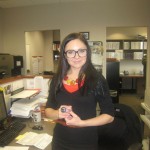Breast augmentation and implants have been one of the most common cosmetic procedures, with about 300,000 women throughout the world opting for the procedure. When you're trying to improve the form and size of your breasts, you'll hear a lot of opinions, both genuine and untrue.
Even though the number of breast augmentation procedures performed each year rises, so do the myths about the operation. You've most likely heard a few. These myths may be preventing you from getting a breast augmentation procedure. Here is a list of six common myths about breast augmentation that should be addressed ASAP.
1. Augnemtated breasts look fake
It's practically impossible to distinguish the difference between natural and augmented breasts with today's procedures. Each patient's physique is unique! Any enhancements made will be unique to that person. A surgeon takes into account a patient's profile, positioning, and dimensions, among other things. Today, breast augmentation outcomes are more natural than ever before.
2. Saline implants are better than silicone gel implants
There is no significant difference between silicone and saline implants. Silicone implants resemble natural breast tissue in their softness and suppleness. Saline implants are harder than silicone implants, however, they don't feel as natural and ripple more. Saline implant ruptures are far more prevalent, absorbing 1% of the implant's weight per year.
Although both types of implants have the potential to rupture, the saltwater in Saline implants is perfectly harmless for the body. If silicone implants leak, they must be removed immediately, although an MRI every two to three years can identify any "silent ruptures."
3. It is impossible to breastfeed after breast augmentation
It's not unexpected that this is a major issue, given that breast augmentation is the most common surgical operation among women aged 17 to 35, according to recent data from The Aesthetic Society. One of the most common misunderstandings regarding breast implant surgery is that it prevents you from breastfeeding. While there is a small risk of losing the capacity to make milk, this is more likely with the periareolar approach than with the other procedures, the vast majority of patients are still able to breastfeed.
5. Breast implants should be replaced every 5 years
Unless there is an issue, there is no need to replace your implants. Many ladies have had their implants for more than 20 years, and they are still soft and natural-looking. Leakage is the most prevalent issue with saline implants, which are utilized when women desire to significantly increase their breast size. A leaking implant must be replaced during surgery, even if it is not harmful.
5. Larger implants are always better
The thought of having huge breasts is both amusing and ridiculous. Consider the proportions of your physique before deciding on a drastic breast size enhancement. Surgeons and patients may obtain a preview of how the volume of size growth will look after surgery thanks to technological breakthroughs like the Vectra 3D. Truth be said, with the appropriate form and proportion, smaller breasts may be quite attractive.
6. Breast implants cause health risks
You should know that breast implants have been authorized for use as a medical device by the United States Food and Drug Administration. Because FDA clearance requires completing a number of stringent safety testing, you may rest certain that implants are considered safe by the administration.
You may have heard stories about women who claim to have experienced a variety of health issues as a result of their breast implants. Scientific studies involving many women with implants, on the other hand, have shown no evidence of a relationship between implants and systemic or autoimmune illnesses. Furthermore, there is no evidence that individuals with breast implants are at an increased risk of developing breast cancer.






Comments